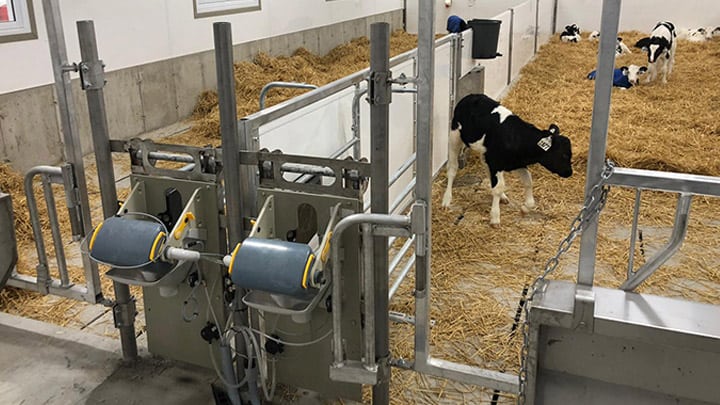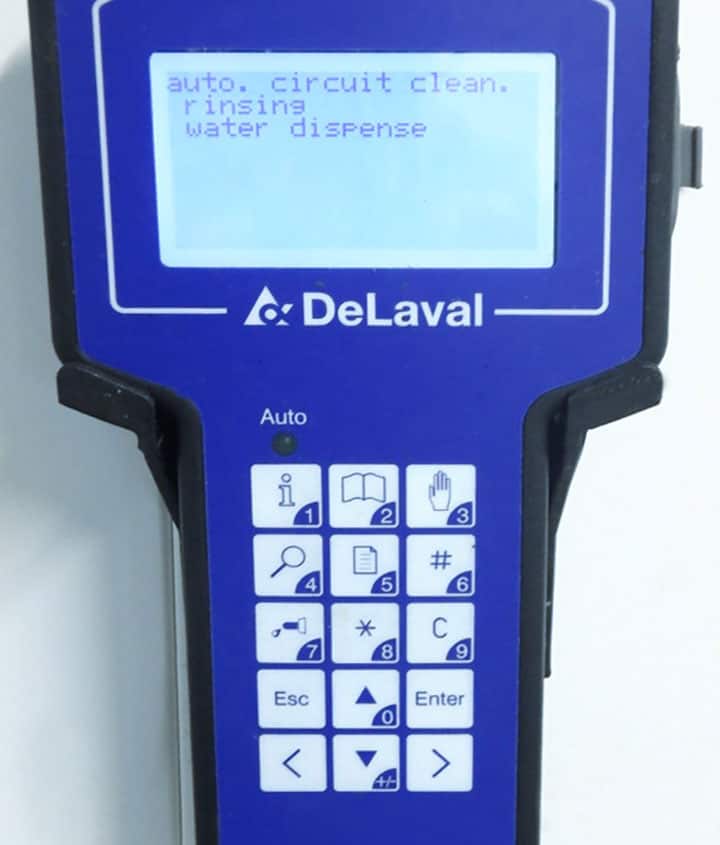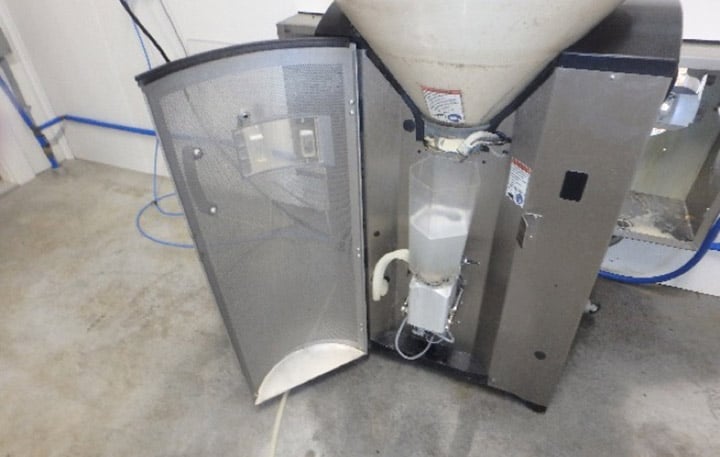My name is Jan Ziemerink. In this calf blog, I want to share my decades of hands-on experience with farmers to help them get the most out of automated feeding to ensure healthy calves, strong heifers, and good performing cows. Read more
Keeping it clean! Sanitation, cleaning strategy and the new Hygiene Box!

My name is Jan Ziemerink, I am the CEO of Foerster-Technik North America. I went to Agricultural school in Holland, after that I worked at Dairy farms in Africa, Europe and a beef farm in Texas. I immigrated to Canada in 1987, where I managed a veal farm and introduced the automatic calf feeders. I reside in Cambridge Ontario Canada, with my wife and my two children. For the last 25 years, I have helped improve the functionality of the machines and make them more farmer-friendly. In the last 8 years, I have travelled U.S.A, China, Japan, Europe, South America and Canada to implement protocols, management tools, provide training to help farmers and dealers successfully work with the autofeeders. In this calf blog, I want to share my decades of hands-on experience with farmers to help them get the most out of automated feeding to ensure healthy calves, strong heifers, and good performing cows.
Basic Sanitation
- External surfaces of the feeding station and the feeder should first be flushed with a lukewarm water followed by scrubbing the feeding station, especially around the nipple with a detergent. Follow this with the same treatment of the autofeeder cabinet and especially the area inside the fly screen. Keep water away from the orifice for the milk replacer powder. About once a week, allow the milk replacer hopper to become empty and wipe it down with a damp cloth and sanitizer. Do not allow it to get too wet! One can do this more frequently with the lid for the hopper.
- Change out the nipples on a daily basis. Wash them thoroughly and allow to soak in a sanitizer until the next day. Replace them when they show any cracks or other signs of wear. The “new” yellow nipples are impregnated with an antibacterial material, so these are a great investment.
- Hoses should be examined closely for accumulation of milk solids and replaced at least monthly basis.
- Detergents and sanitizers are key items required for success. Most regular detergents will work for washing external surfaces. Chlorine dioxide is an excellent surface sanitizer for use after cleaning.
- Water quality is especially important for healthy calves and successful cleaning. Evaluate the “calf” water at least every 6 months. Recommendations for water quality are shown in the Table 1. Hard water may make cleaning difficult. However, the installation of water softener systems may add excessive sodium which is not recommended for mixing milk replacer. Keep sodium below 50 ppm for best results.

Milk or milk replacer?
The autofeeder will deliver either milk or milk replacer equally well according to the feed plan. However, remember that using a high-quality milk replacer (which mixes at drinking temperature) has a lower bacteria count to begin with and is much, much easier to manage and maintain a low bacteria count. As it comes from the cow, milk will have a higher bacteria count and one must effectively sanitize many surfaces beginning with pre-pasteurization storage, post-pasteurization storage and all the transfer lines and transit tanks that milk contacts from the cow to the calf’s mouth. This can be a challenge!!! Adopt a mindset of treating this calf milk with the same care as that which leaves the farm for human consumption.
Cleaning the autofeeder machine.
The autofeeder has many excellent features which can do a great job of maintaining low bacteria counts of the liquid diet when the feeder is correctly programmed and maintained. Automated cleaning technology has advanced since the autofeeders were firs manufactured. This blog will address the fundamentals for powder and combi unites, for machines which utilize only one detergent and those which allow automated detergent and sanitizer and finally we will highlight features for the new “Hygiene Boxes.”
- The first step for cleaning regardless of the age of the machine or whether it is a combi or powder feeder is circuit cleaning. The handheld device will provide necessary prompts for each step of this process.
- On a daily basis, remove the nipple and insert the hose into the mixing bowl. Hand clean the nipple and store in a mild sanitizer.
- From the handheld, press the I or #1 key to access main menu. Press the circuit cleaning key and follow prompts on the screen to initiate the circuit cleaning routine.
- Every few days check all hose connections for leaks and for buildup of residues.
- After completion of the circuit cleaning, return the hoses to the feeder station and replace a clean nipple.
- For older systems, acid sanitizer may be added during the latter stages of the cleaning cycle.
- Remember to use a detergent specifically recommended for the autofeeder which is effective at a lower temperature. Follow manufacturer recommendations for the correct level of detergent.
- For powder or combi feeders (can feed milk and powder) the system will automatically clean the internal workings of the feeder according to a schedule set by the operator. Research at Virginia Tech and Minnesota has shown that mixer (powder) or heat exchanger (combi) cleanings should be performed 3 to 4 times daily at equal intervals. The older equipment utilizes only a detergent while newer systems will use a detergent followed by a sanitizer. These solutions are accessed by the feeder automatically from vessels either just inside the side door or from external containers. Cleaning settings are established using the handheld device. Once the settings are established there is no need for changes unless different detergents or sanitizers are used.

Handheld showing progress of the circuit cleaning step.
Foerster Technik has introduced “Hygiene Boxes” which enable the feeder to conduct the circuit cleaning automatically. This equipment allows cleaning of the entire system from when the milk or milk replacer is mixed, through all hoses until reaching the teat end. In most cases the first cleaning is scheduled around 4:00 a.m. before calves begin drinking and the second in late afternoon around 15:00 h. The mixer or heat exchanger cleanings continue to be scheduled between these automatic “hygiene box” circuit cleanings. In summary, with the Hygiene Boxes the entire system is cleaned twice daily and the mixer or heat exchanger is cleaned 3 to 4 times per day. This more effectively automates cleaning of the feeder allowing the calf manager to spend more time focused on calf care. However, time must be allocated each day to assuring that automated systems are functioning.

Powder feeder shown during the circuit cleaning process. Note the cleanliness of the mixing area of the feeder in a system that has been in use several years.
Jan Ziemerink and Dr. Bob James – Calf Blogger
